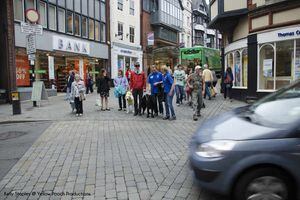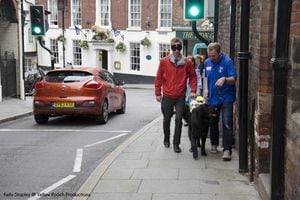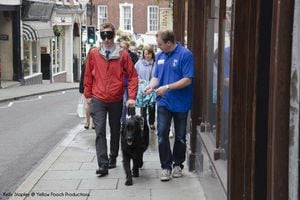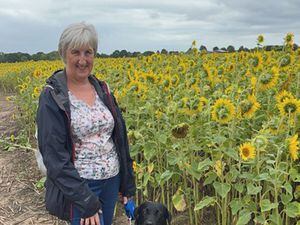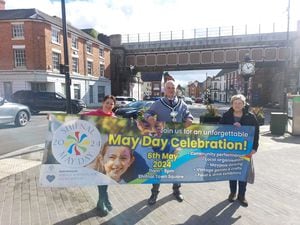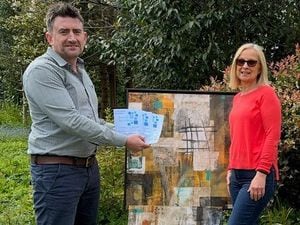Engineer's eyes are opened in blind test on streets of Shrewsbury
Have you ever wondered what it's like getting out and about if you can't see? County highways engineer Richard Harman found out for himself when he put on a blindfold and made his way around the centre of Shrewsbury.
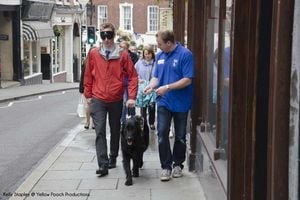
With the help of Guide Dogs for the Blind, Mr Harman negotiated the busy streets of Wyle Cop and Pride Hill.
His aim was to find out how people are affected by his work on roads and pavements - be they blessed with perfect eyesight or one of the estimated 10,000 Shropshire folk affected with some form of vision problem.
"It was daunting," he said. "Pretty scary. But the experience did give me some ideas."
For the past 18 months Mr Harman's department has been working on the £200,000 revamp of Wyle Cop.
Their aim is to take away the system of giving priority to drivers or walkers, encouraging both sides to treat each other with more courtesy.
Kerbs are being lowered, priority signs are being removed and a pelican crossing is being taken out.
"We're removing pedestrian barriers and laying raised coloured surfacing in the road at crossing points," he added.
The work began on June 2 and is due to finish later this month.
The idea is based on a concept called Shared Space, which is popular in Europe where it has been linked to a big fall in accidents as people pay more attention to what others are doing.
Other Shropshire towns such as Shifnal and Telford are also looking into the idea.
"When using our streets we're used to being told exactly what we can and cannot do," said Mr Harman.
"This is about removing all those instruction signs and not giving priority to any one group, blurring the lines to create a street that can be used by all.
"It's all about good design."
But the idea has caused some concern among people with sight problems, who fear it could make their lives harder.
As a result county Highways Department has been working with Guide Dogs to address those fears.
"One of the challenges is trying to make it work for everyone," said Mr Harman.
"It can work well for the majority of people, but we don't want to make it discriminatory for the blind and because of this we decided to include a zebra crossing in the scheme."
As part of the project he put on his blindfold to find out how those with sight loss deal with getting around the town.
"It helped me appreciate the issues more," he said.
For example, Mr Harman said there was a need for the colour contrasts in the paving to clearly mark out crossings.
And there are other ways of helping those with sight problems know exactly where they are walking.
"We're also making good use of tactile paving, such as blister paving, with raised points that you can feel through your feet.
"It's the small details that we can design into the scheme that will make a big difference for everybody."
Laura Lane Clarke, Engagement Officer at Shrewsbury Guide Dogs said: "We have received many phone calls from concerned guide dog owners in the area who were worried that this might result in shared space being rolled out in their home towns – fearing that they would no longer be able to get out independently if this did happen.
"I really hope that following the blindfold walk Richard will have a very clear understanding of the needs of blind and partially sighted people when looking at any future schemes in Shropshire.
"There is an estimated 10,940 people living in Shropshire with sight loss and this is thought to increase to 13,800 by 2020 so it is essential that planners consider this when designing for the future."
With the Wyle Cop work due to finish in a few weeks, everyone will be able to experience the difference - including those who cannot see it.
